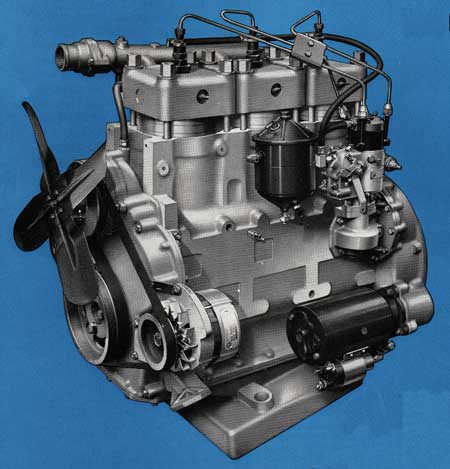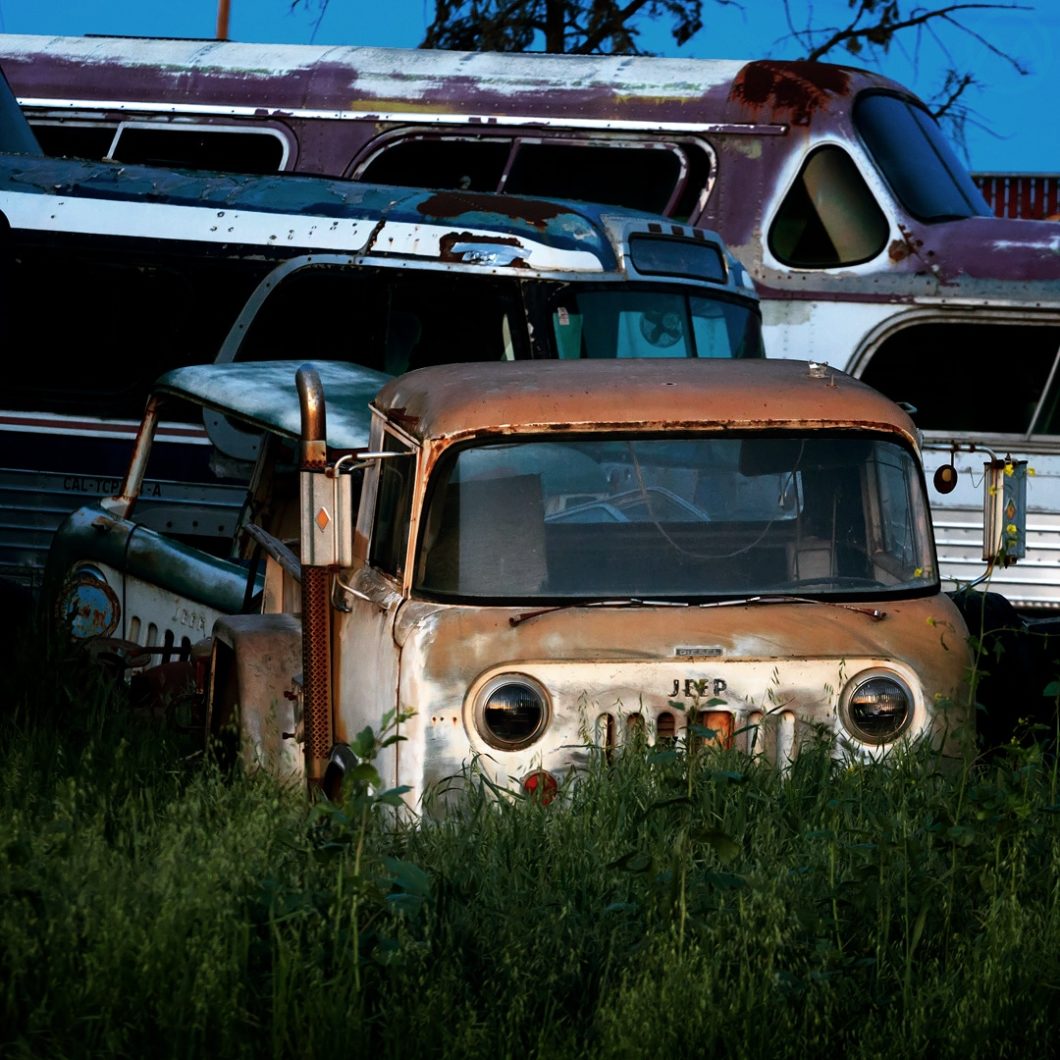In the pantheon of weird Jeeps this is probably one of the weirdest – and rarest. It’s a Jeep Forward Control, and while all Jeep FCs are rare, this one is particularly unusual. Look closely, however, and you’ll see a “diesel” badge just above the word Jeep, and you’ll also notice that it doesn’t have the trademark Jeep 7-bar grill. It’s been a long time since its tour of duty but this is a Military-spec Jeep M676 single cab pickup.
In 1964-65, Jeep built about 500-1,000 FCs for the United States Marine Corps and the Navy, though it was the USMC that wanted them. Most were double-cab pickups or fully-enclosed vans rather than M676 pickups, and very few of any type survive today.
As the badge (which isn’t standard equipment but borrowed from an International Scout) implies, its engine was the weirdest part. It’s a loop-scavenging diesel 2-stroke triple built in tiny numbers by a North Carolina company using tech invented by an Austrian academic whom the Defense Department kept under observation for a while, ostensibly for his own safety.
We’ll start with Professor Hans List.
The Diesel Doctor
Born in Graz, Austria, in 1896, Dr. List was an engineering academic who taught engineering first in warlord-era China, then back in Graz, and then in Dresden for 22 years. The final four were spent helping the Wehrmacht with small diesel engines – which were always his specialty. He counted among his colleagues Adolf Schnürle, who invented the loop-scavenging concept for diesel two-strokes.
When the war was over so was his teaching job, so he formed his own engineering consultancy in 1946 – Anstalt für Verbrennungskraftmaschinen List, or AVL.
There he patented many of the ideas he’d had over the years and sold them to manufacturers such as Ford and Alfa-Romeo, though they did not use his ideas in cars. His work was well known enough that, supposedly, the Agents of the Soviet Union repeatedly tried to kidnap him.
After what had happened during Operation Osoaviakhim in 1946 (when the Russian NKVD had kidnapped thousands of German engineers, often at gunpoint), the U.S. intelligence agencies kept closer watch on men like List to prevent that from happening. Whether or not he was ever in any real danger is unclear.

In 1955-56, North Carolina entrepreneur Peter Cerf obtained the U.S. license for List’s diesel technology and formed a company to build diesel engines based on the patents – Cerlist. Cerf + List = Cerlist. Cerf and his team planned to build 2,000 engines a year in a 10,000-square-food factory in Burlington, N.C., and designed inline 2 and 3-cylinder diesels as well as V4, V6, and V8 versions of the engines.
The loop-scavenging diesel uses inlets instead of valves, which reduces mechanical complexity and makes the engines a little more durable – and they were built like tanks. A 170-cid Cerlist triple weighed almost 600 lbs. and developed about 75-80 horsepower. Hardly useful for a car, but indestructible and perfect for military or stationary use. By the end of 1956, Cerf had enlisted North Carolina Senator Sam Ervin to help secure military contracts.
The Jeep Forward Control
In the meantime, Jeep launched the FC in 1956. Designed by the amazing Brooks Stevens, an industrial designer and regular consultant to Willys, Kaiser-Jeep, and Studebaker, the FC took the CJ5 platform and turned it into a forward-control pickup. The market seemed ripe for such a vehicle given the success of small imported cab-forward trucks like the Volkswagen Type 2.
Although Stevens also designed van versions and some vans were built by coachbuilders and in other countries, the FC was a pickup only from the factory, and that limited its appeal. The FC also looked just a little too weird and ungainly for most buyers in its original FC-150 form, as short as a Nash Metropolitan but as tall as an apartment building.
It never seemed to connect with a consumer audience, even after the much longer and more capacious FC-170 (which used heavier duty underpinnings from the Jeep Pickup) was launched in 1957. It did well as a fleet vehicle, however, and that’s where the military connection came in.
The FC never hit its sales targets and in the early 1960s Kaiser-Jeep figured a military version might help boost production. The company already had plenty of military contracts, and the USMC was interested in an efficient pickup and van. Jeep built and tested the prototypes, all based on the FC-170, in 1962 and got a contract to build them for the USMC and the Navy – with Cerlist diesel power, possibly due to Ervin’s connection.
M676 and the other Cerlist Jeeps
Production of the trucks began in early 1964. The regular FC-170 used the Continental “Hurricane” 226-cid Six, which was replaced in the military versions by the Cerlist 170-cid triple. There were four versions – the M676 seen here, the M677 double-cab, and the M678-679 Van/Ambulance.
All had some heavier duty suspension components and the different grill with the extra wide center opening, which was created to make it easier to mount lights and accessories on the front of the truck.
The M676 was glacially slow – a top speed of just 52 mph – and it weighed almost 900 lbs. more than the FC-170 pickup, but it was indestructible and frugal.
But by the time production started, nothing was going to save the FC – and the truck was out of production by early 1965, with leftovers still on sale that year to civilians and a few belated military deliveries. By then Jeep was working on the M715 project, which would prove much more lucrative and long-lived, and which didn’t use such an obscure engine.
Cerlist was never able to build the 2,000 engines a year – there just wasn’t demand, and eventually went bankrupt in the mid-1960s despite its USMC contracts. It ended up absorbed by a Wisconsin company who moved the assembly line to Iowa, where it lingered a long time in slow production (one engine every 48 days at some points) until fading away in the early 1970s.
The military FCs served into the 1970s, though they tended to lead hard lives and probably only 50-100 survive today. Licensed FC production continued in Spain until 1983 and India (at Mahindra, who still make Jeep-a-likes) until 1999.
The truck-like smokestack and some of the other details on the M676 up top are not stock, speaking to a colorful life after service before it ended up in a field with a worse-for-wear civilian FC (and a Greyhound Scenicruiser!) for company.

